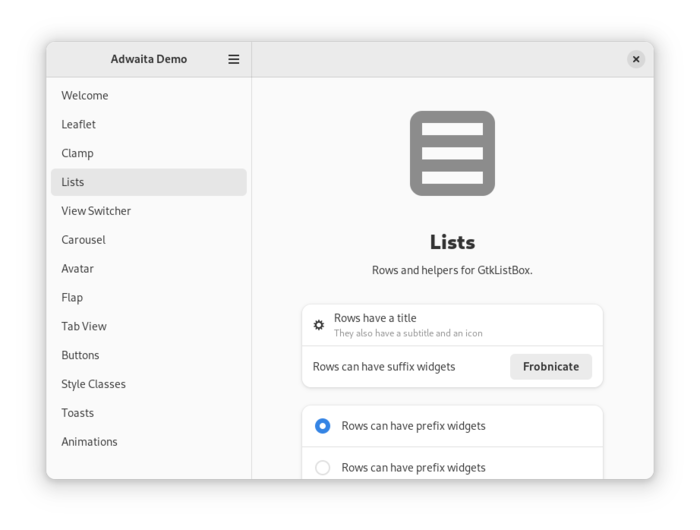project gnome published release of the library libadwaita 1.2 , including a set of components for the style of the user interface corresponding to Recommendations gnome hig (Human Interface Guidelines). The library includes ready -made widgets and objects for building applications corresponding to the general GNOME style, the interface of which can adapt adaptively to screens of any size. The library code is written in SI and is distributed under the license lgpl 2.1+.

Libadwaita library is used in combination with GTK4 and includes components of AdWaita designed in GNOME, which were taken from GTK to a separate library. The removal of GNOME visual design elements into a separate library allows you to develop the changes necessary for GNOME separately from the GTK, which makes it possible to focus on basic things, and GNOME developers will quickly and flexibly promote the changes in style design, without affecting GTK itself.
The library includes typical widgets covering various interface elements, such as lists, panels, editing blocks, buttons, tabs, search forms, dialogs, etc. The proposed widgets allow you to create universal interfaces that organically function both on large screens of PC and laptops, and on small sensory screens of smartphones. The application interface is dynamically depending on the size of the screen and available input devices. The library also includes a set of Adwaita styles, bringing the appearance in accordance with the recommendations of GNOME, without the need to perform manual adaptation.
The main changes in libadwaita 1.2:
- Added widget adw.entryrow designed for use as element of lists. The widget provides an input and title field with the ability to attach additional widgets before and after the entry field (for example, the input confirmation buttons or the indicator that the data can be edited).
Additionally, the option of adw.passwordentryRored > - Added widget adw.messagedialog